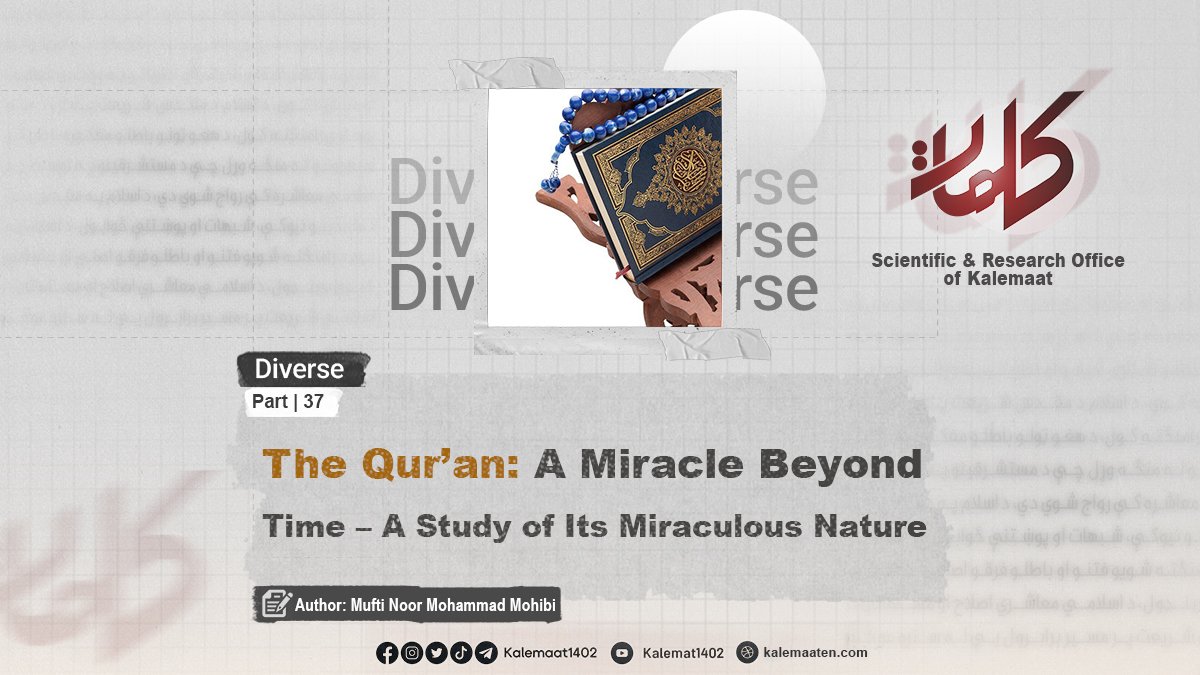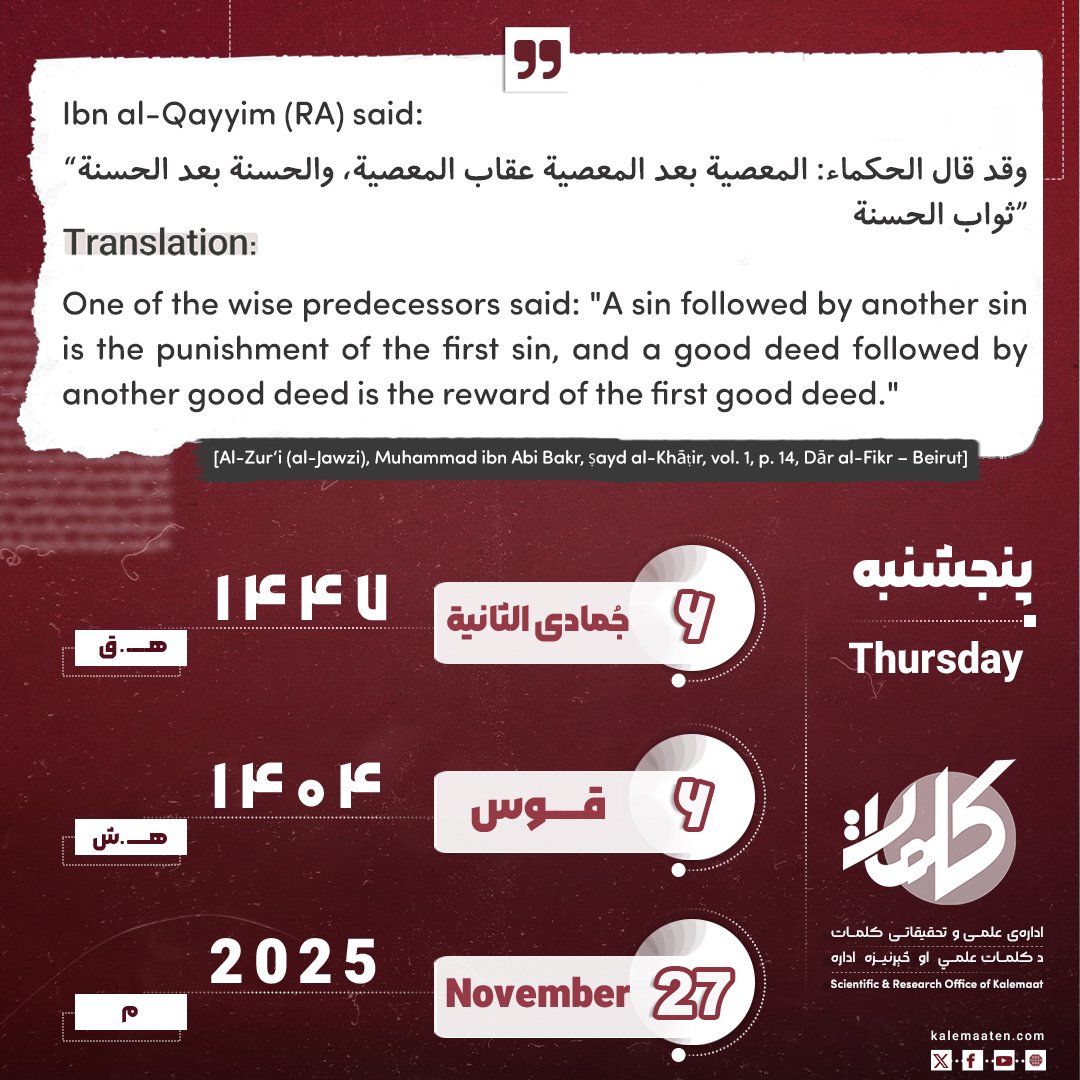
Author: Mufti Noor Mohammad Mohibi
The Quran: A Miracle Beyond Time- A Study of Its Miraculous Nature (Part 37)
The Role of the Eyes in Sensual Perception
Allah Almighty refers to one of His most important blessings upon man in the Holy Quran; namely, the blessings of “hearing”, “sight” and “inner perceptions”. In several verses, such as the noble verse: وَٱللَّهُ أَخۡرَجَكُم مِّنۢ بُطُونِ أُمَّهَٰتِكُمۡ لَا تَعۡلَمُونَ شَيۡـٔٗا وَجَعَلَ لَكُمُ ٱلسَّمۡعَ وَٱلۡأَبۡصَٰرَ وَٱلۡأَفۡـِٔدَةَ لَعَلَّكُمۡ تَشۡكُرُونَ Translation: “Allah brought you out of the wombs of your mothers knowing nothing, and He gave you hearing, sight, and hearts that you may be grateful.” [Al-Nahl: 78]
The importance and special place of these senses in human life has been emphasized. In this section, we will examine the eyes and ears in detail and scientifically, their functions and wonders of creation, and examine the relationship of this science with the verses of the Holy Quran.
Eyes and the Miracle of Seeing
The eyes, these small but amazing organs, give humans the ability to see the world. The fundamental question is how, with such a small size, humans are able to see the world around them in real and in all dimensions? The human eye does this with a combination of complex structures.
Accuracy and Color Resolution
The human eye is able to distinguish more than 800 thousand different shades of color. This extraordinary ability is due to the presence of millions of cone and rod cells in the retina of the eye that record process colors and details. The eye is also able to distinguish very thin lines and transmit images to the brain with very high resolution.
3D Perception
The existence of two eyes allows humans to perceive the depth and distance of objects. If the eyes were the same, the world would appear two-dimensional and flat to us, and we would not perceive the true dimensions of objects.
Rapid transmission of images
The image entering the retina is transmitted to the brain and processed in less than one fiftieth of a second, so that the eye is able to send about fifty images to the brain per second. This extraordinary processing speed provides the ability to react quickly to environmental stimuli.
Transparent structure and special nutrition
The cornea of the eye is designed to be completely transparent and without blood vessels so that light enters the eye in the best way and the image is clear. This part is nourished by special fluids and exchanges substances with the surrounding cells. Also, the iris, or the colored part of the eye, automatically reacts to the intensity of light and adjusts the size of the pupil to prevent eye damage.
This is where Allah, the Exalted, describes this unique, valuable and magnificent blessing of His creation in the following verses: وَٱللَّهُ أَخۡرَجَكُم مِّنۢ بُطُونِ أُمَّهَٰتِكُمۡ لَا تَعۡلَمُونَ شَيۡـٔٗا وَجَعَلَ لَكُمُ ٱلسَّمۡعَ وَٱلۡأَبۡصَٰرَ وَٱلۡأَفۡـِٔدَةَ لَعَلَّكُمۡ تَشۡكُرُونَ Translation: “Allah brought you out of the wombs of your mothers knowing nothing (of the world around you), and He gave you hearing, sight and hearts that you may be grateful.” [Surah Al-Nahl, verse 78]
And: قُلۡ هُوَ ٱلَّذِيٓ أَنشَأَكُمۡ وَجَعَلَ لَكُمُ ٱلسَّمۡعَ وَٱلۡأَبۡصَٰرَ وَٱلۡأَفۡـِٔدَةَۚ قَلِيلٗا مَّا تَشۡكُرُونَ Translation: “Allah is the One who created you (from nothingness), and made for you hearing, sight, and hearts (which are the means of your work and happiness. But you are little grateful for these blessings”. [Al-Molk: 23]
And: أَلَمۡ نَجۡعَل لَّهُۥ عَيۡنَيۡنِ Translation: “Have We not arranged and made for him two eyes?” [Al-Balad: 8]
In short, the eyes and ears are among the most complex and delicate sensory systems of humans, which provide the basis for understanding the world with unparalleled precision and coordination. These organs are not only tools for seeing and hearing, but also windows to understanding the truth and beauties of creation. The verses of the Holy Quran, while pointing out the importance of these senses, call us to contemplate the wonders of creation and be grateful to the incomparable Creator. [1]
Continues…
References:
- Encyclopedia of Scientific Miracles in the Qur’an and Sunnah, Vol. 1, pp. 134-136.



